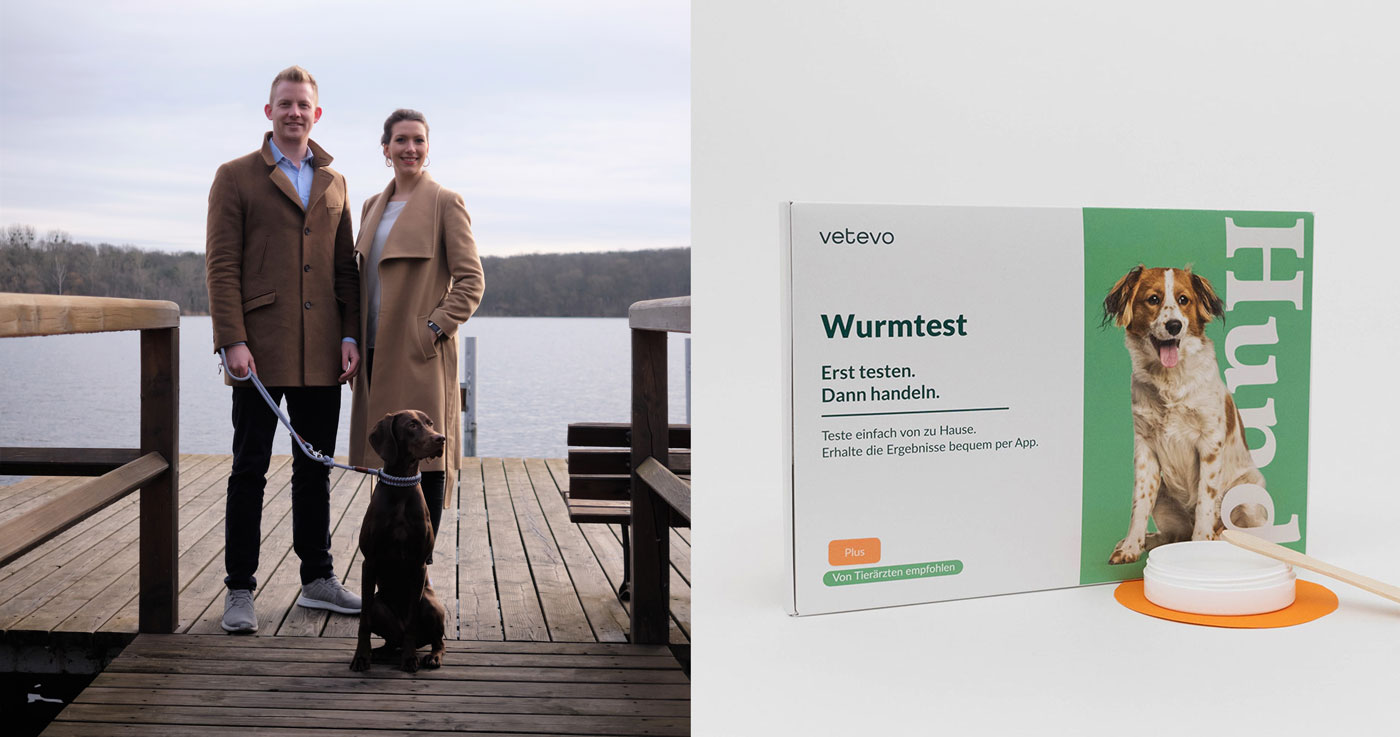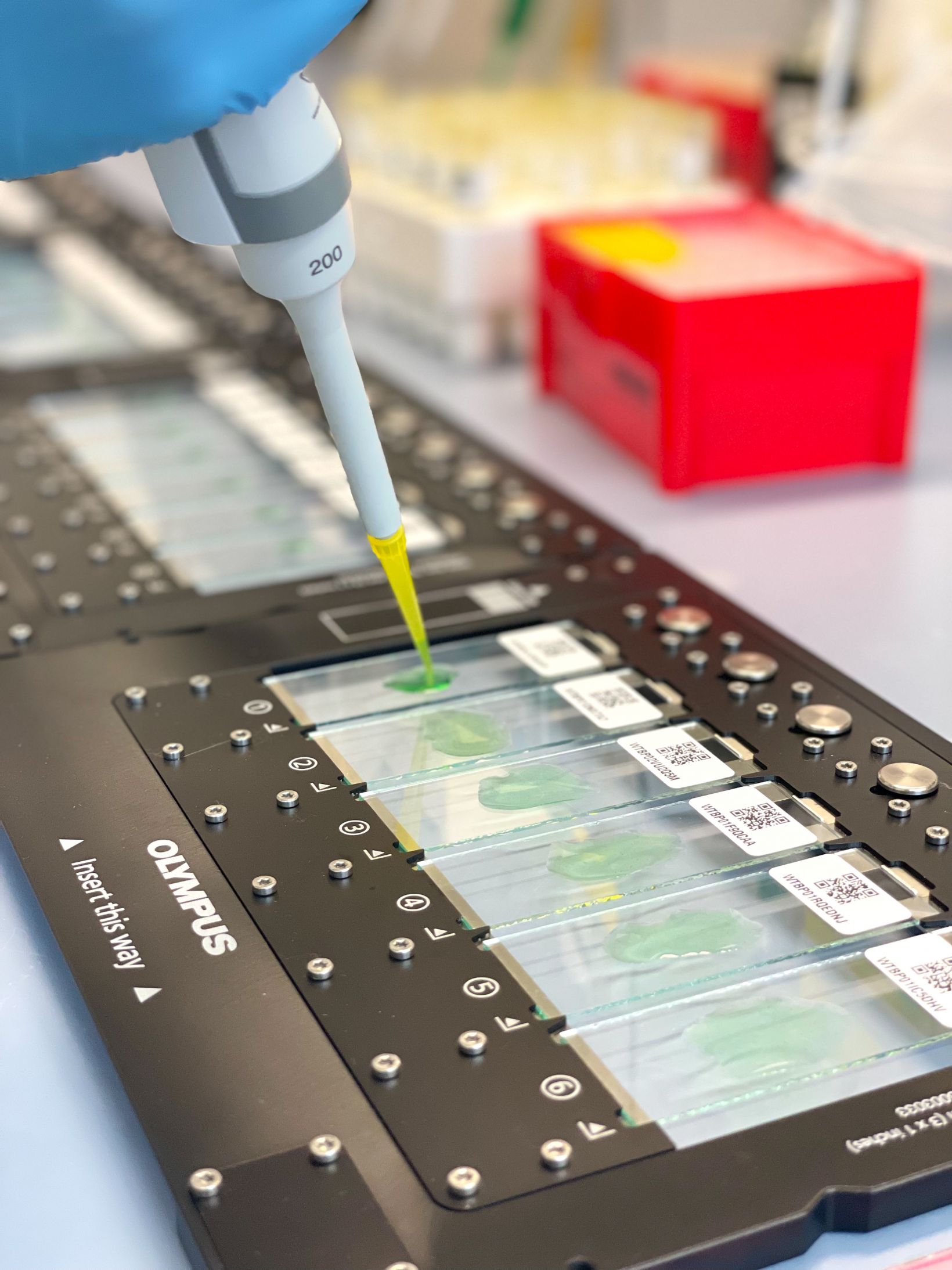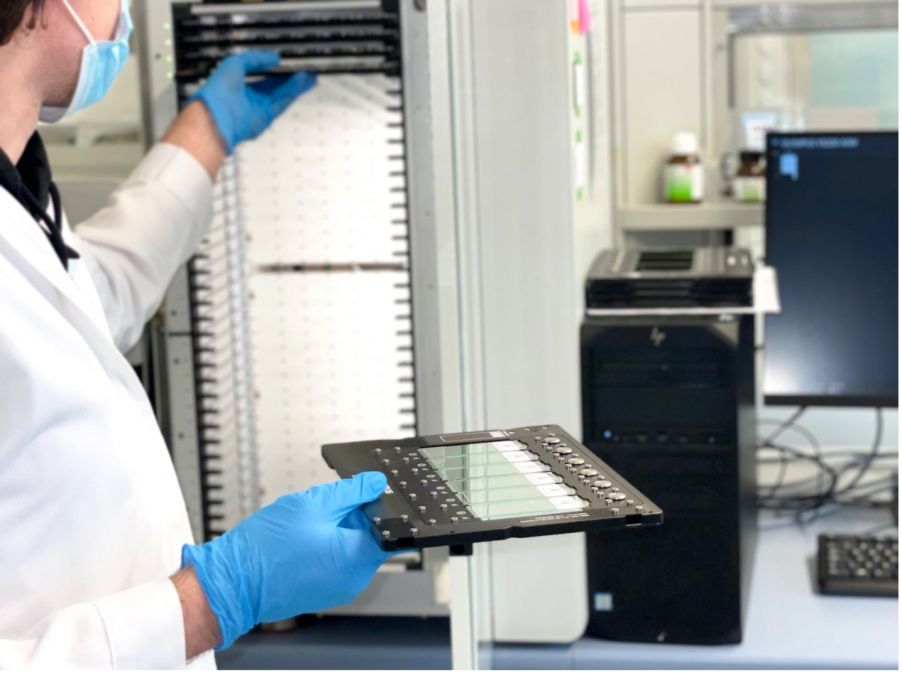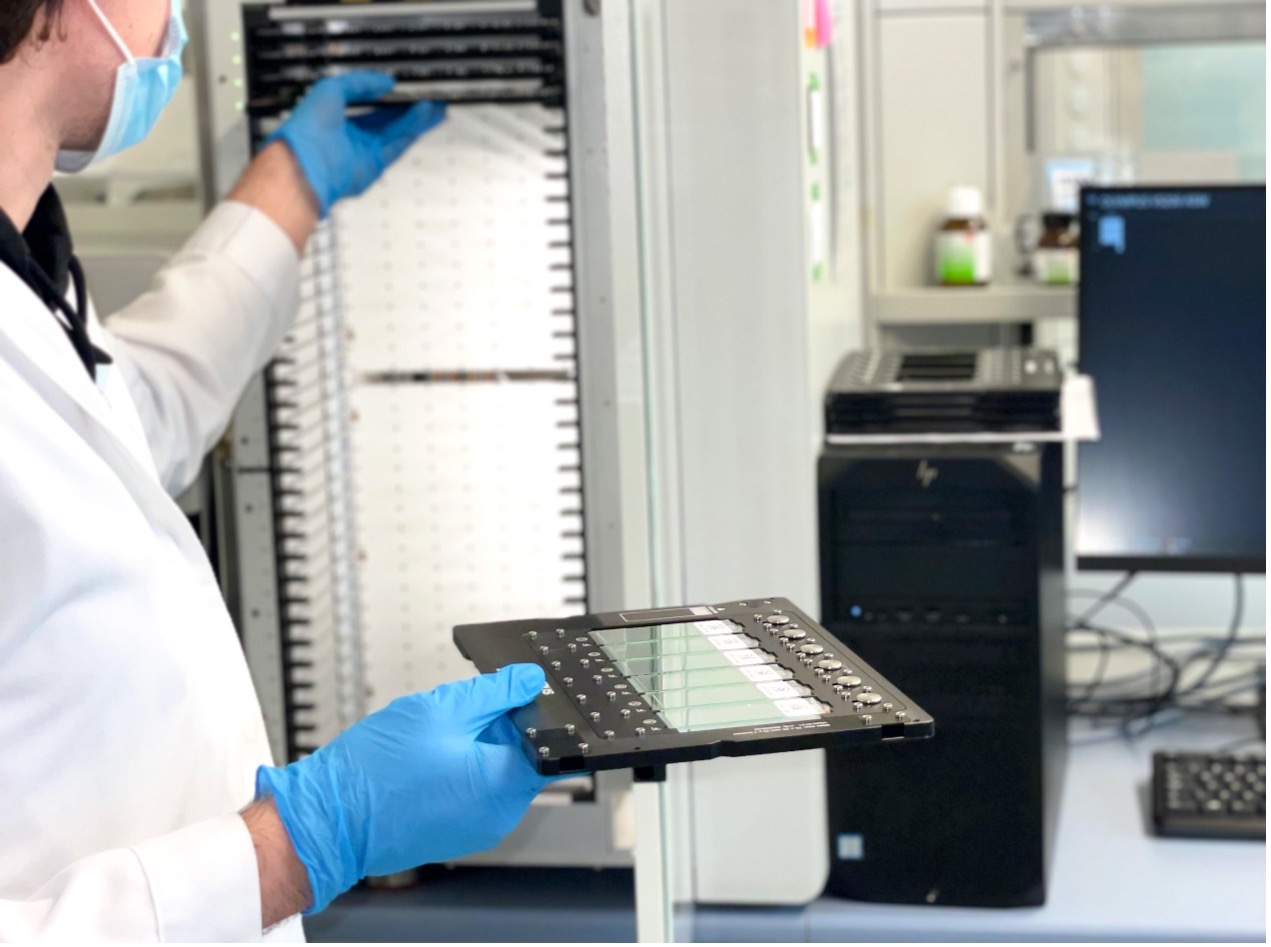A fast-growing and ambitious direct-to-customer animal healthcare company, vetevo, required tools to help it meet increasing demand as well as potential growth. The VS200 research slide scanner was key to the solution.
Seeking a Solution for High-Volume, High-Quality Lab Results
Although it offers various lab testing services for animals, such as DNA and allergy testing, vetevo’s core product is its worm test. Pet owners collect a sample (feces specimen from a horse, dog, or cat) and send it in the designated sample packaging to vetevo’s lab for diagnosis using microscope imaging. Initially, the lab was equipped with manual microscopes.

Figure 1. vetevo co-founders Dr. Felix Röllecke and Mareile Wölwer (left) and the vetevo worm test (right)
To continue to fulfill its pledge of a fast turnaround while its customer base and sample volume increase, vetevo had to find a way to expand its testing capacity. Read our Q&A with vetevo to learn about the role that the VS200 system played in the company’s plans to scale for the future.
Q: What were the challenges you needed to address that led you to the VS200 system?
vetevo: The initial problem was our “nonscalable processes.” Before we implemented the VS200 system into our laboratory workflow, our microscopy processes were highly manual and, thus, not scalable. In fact, we were forced to add additional employees and resources to increase the sample testing capacity. We’d reached the limits of our ability to improve our efficiency. Also, since our lab team spent most of the workday performing highly repetitive and physically straining manual microscope operations, we were unable to fully leverage the team’s potential to—for example—assist in our product development.
As a young and agile start-up, our ambition was from the beginning to continuously improve and automate our operations and laboratory processes through technology. Since we are anticipating continuous company growth, it is crucial for us to build resilient and agile operations that can keep up with the increase in demand. The VS200 system enabled us to automate important processes in our value chain and boost our innovation potential.

Figure 2. A vetevo lab tech preparing slides for testing in the VS200 slide scanner
Q: What were your selection criteria when you were searching for a solution?
vetevo: When we evaluated alternatives to our manual microscope process, we considered several evaluation criteria in our decision: We wanted to ensure that the newly implemented automation had a significant economic advantage vis-á-vis the former manual setup. We also had specific criteria for the automated microscope candidates, which involved the ease of integration into our workflow and the quality of the system’s output (i.e., the image quality).
Q: Why did you choose the VS200 slide scanner, and how does it fit into your process?
vetevo: Once we decided we wanted to automate the microscope testing process in our laboratory, we requested product demonstrations of several automated microscopes from different companies. In the end, we have decided to go with the VS200 system for two main reasons: First, the ease of use with the Olympus system was significantly better than with other systems we saw. Second, the image quality of the VS200 system met our high standards.

Figure 3. Slide images of specimens from vetevo’s laboratory
Rapid Automated Slide Scanning with AI-Based Sorting
Per day, there are several hundred samples arriving at vetevo’s laboratory. After the VS200 system scans the object slide with the sample—usually the microscope takes around 300 pictures of each sample in a few minutes—the data is processed by an AI that distinguishes between positive (parasite eggs are found) or negative (no parasite eggs are found) results. The result is then sent to the customer via the vetevo smartphone application. We also keep the result data in our database for future reference and research.

Figure 4. vetevo lab tech inserting prepared slides into the VS200 research slide scanner for automated scanning
Q: What have been the benefits for your company?
vetevo: By deploying the VS200 slide scanner, we can not only maintain the high quality level we strive for in our microscope-based analysis, but also increase our throughput rate. Every month, we are reaching new “all-time-high” numbers of samples that arrive at the laboratory. Today, we can’t imagine how we would have coped with the additional burden without the VS200 system.
“With the VS200 system in place, we were able to achieve scalability for future growth, and, also, further our innovative edge, making us probably one of the most tech-enabled laboratories in the country.”
-vetevo testimonial
Learn more about vetevo at www.vetevo.com.
To learn more about the SLIDEVIEW VS200 research slide scanner, go to www.olympus-lifescience.com.


